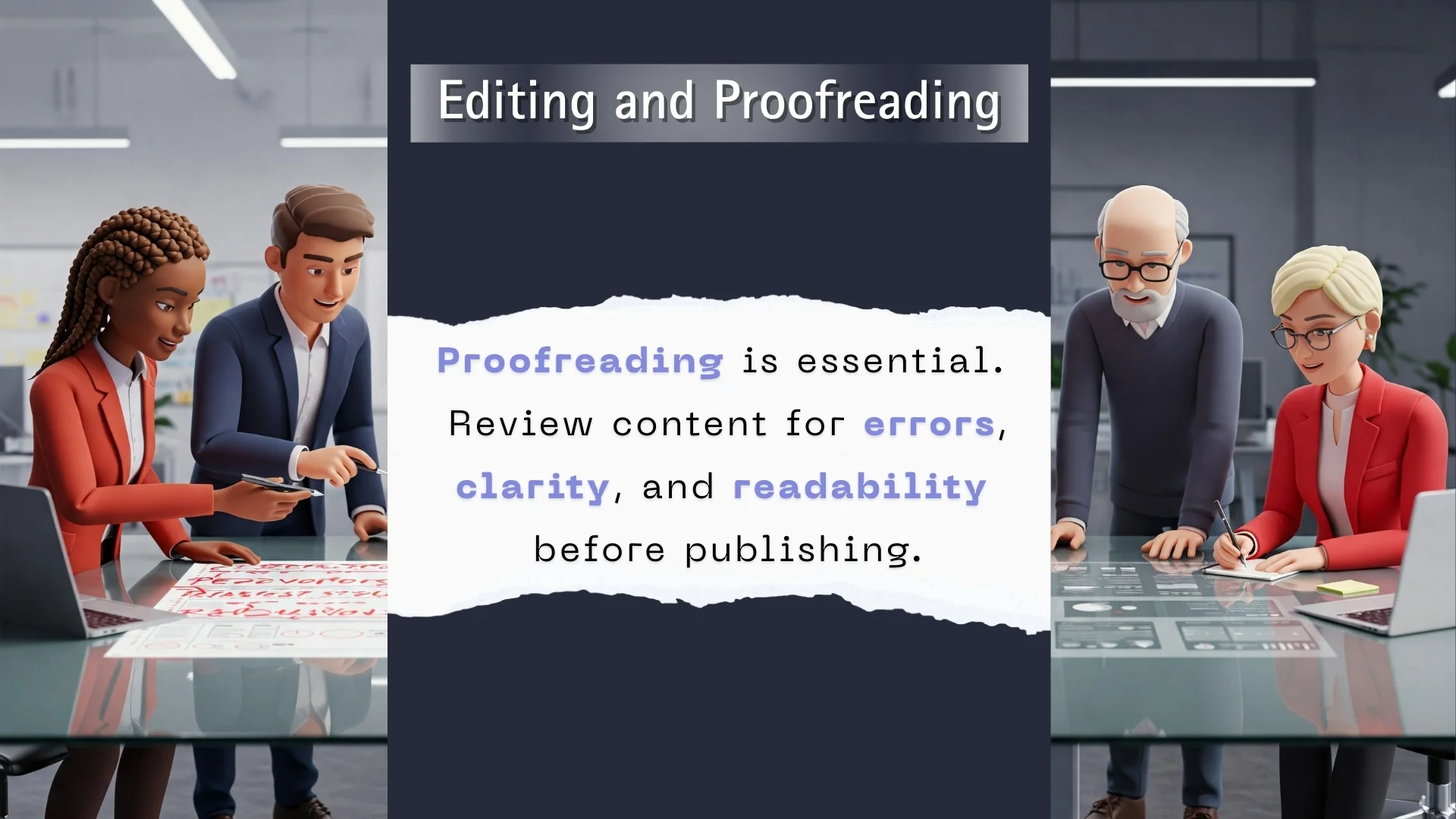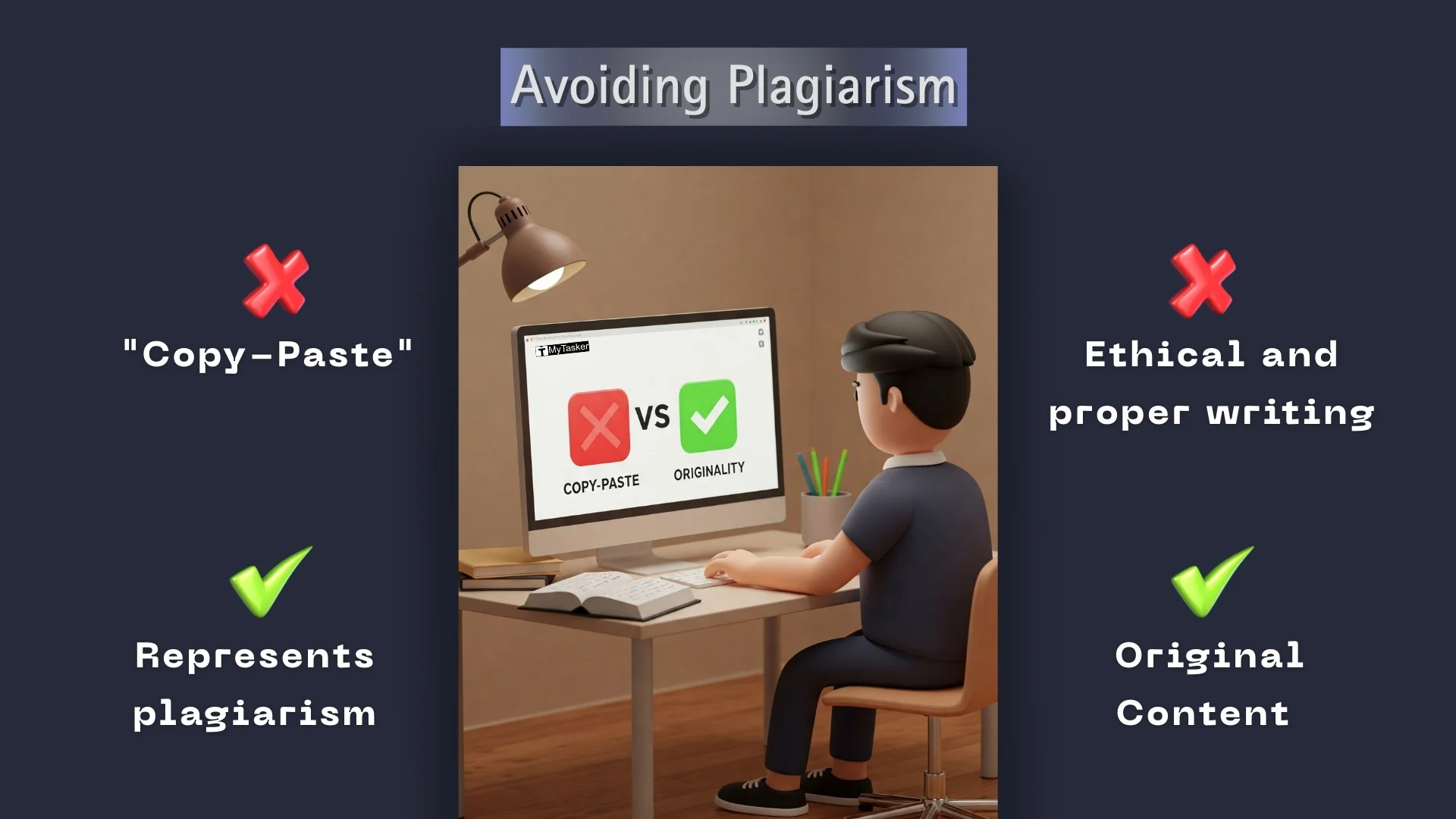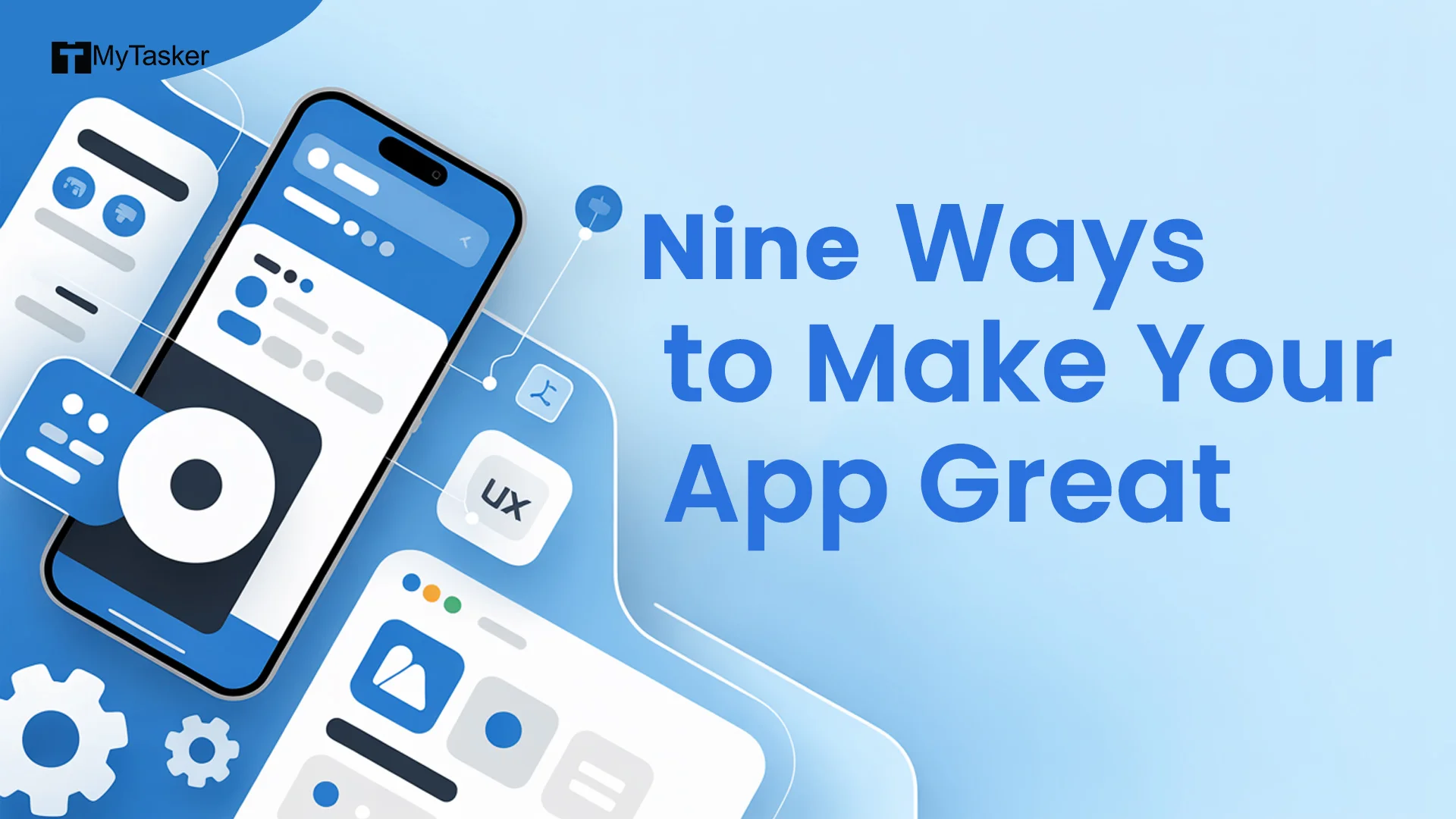Sometimes, content writers, whether newbies or professionals, may get lost in the maze of writing several marketing and other materials. That is when they should consider the dos and don’ts of content writing.
Overlooking a few crucial steps or harping on the less important content writing processes can be common mistakes for them. They may forget or even ignore the fact that a changing world requires a constantly evolving writing etiquette.
In such cases, marketing managers or content heads need to educate and train their content writers. With this education, content writers can improve their writing quality to make it fit in today’s digital world.
You can also delegate content writing tasks to them confidently.
To help you educate other writers, or even yourself, if you are one, we have listed the dos and don’ts of writing content. Keep reading to find out what you should and should not do when writing any content piece for your website!
What Are the Do’s and Don’ts of Content Writing?
The dos and don’ts of blogging are a list of the basic rules you must keep in mind to create content that sells. These rules are related to grammar, SEO, tone, and writing style, among other elements of writing.
Following them can help you communicate with your target audience in an engaging and relevant manner.
Let us now explore each of the dos and don’ts of creative writing in detail.
The Do’s of Content Writing
1. Do Research Before Writing

Great content ideas start with great research. You need to conduct extensive research to provide your readers with valuable stories, interesting points, and relevant facts. All of these can help keep your target audience engaged with your content.
More importantly, research before content writing helps you organize your thoughts enough to create an outline (more on that further below). It also helps you become an expert on the topic you are writing about.
While researching for your next impactful blog post, be mindful of the content you find online. Always look for information from reputable and authentic sources.
Apart from validating your content, research can shed light on the following points:
- The platforms where your target audience usually is.
- How your target audience interacts with other online brands and businesses.
- The topics can resonate with them.
- The type of content your competitors are using.
- The kind of response the competitors are receiving from their audience.
Extensive research in the above directions can help ensure you are following the correct path in your content marketing.
2. Do Keep Editing and Proofreading

Spelling and grammatical errors make anyone’s writing look unprofessional. No reader would want to read a piece of writing filled with such errors, no matter how informative it is.
To avoid such a scenario, proofread your content thoroughly before publishing to ensure its high quality and lack of errors.
Try reading the content piece aloud to detect any errors or inconsistencies in sentence structures. Once you identify such errors, edit the content straightaway.
An alternative option is to use proofreading tools, such as Grammarly.
3. Do Learn and Implement SEO

If your content is on the first page of Google’s Search Engine Results Pages (SERPs), there is a higher chance of consumers finding your content organically.
In fact, a 2022 study found that the clickthrough rate (CTR) for websites ranking first on Google’s SERPs is 39.6%. If the first result is a featured snippet, then the CTR increases to 43.7%. This figure drops to 18.4% for websites ranking second and then drastically to 2.2% for websites in tenth position.
Moreover, the study claims that the top 3 organic search results receive about 68% of all clicks on Google’s SERPs.
You can see what a cut-throat competition the SERP is. Fewer clicks on your website mean fewer visits, which mean fewer chances of generating leads. The ultimate result here is fewer revenue.
This is why Search Engine Optimization (SEO) should be the name of your content writing game. It can bring traffic to your website free of cost! So, learn and incorporate an SEO strategy in your content writing process.
For example, when writing a blog post or webpage content, writing effective 160-character meta descriptions can complement an equally effective headline. Ensure your meta descriptions contain your keywords as well.
Also, learn how to format your content for on-page SEO by:
- Breaking down the content into headings and subheadings
- Using numbered or bullet points
- Sprinkling keywords naturally throughout the content
- Properly structuring the blog post, that is, introduction, then the body, followed by the conclusion
- Using internal links to pass on link equity to pages or posts you wish to highlight for search engines and your audience
- Externally linking to high-authority and relevant websites
- Writing long-form blog posts of over 2,000 words (if it adds value)
- Adding alt text to each image in your blog post
- Compressing images without sacrificing their quality to make sure that the page loads quickly
4. Do Provide Value to the Reader
Readers do not have time to read just for the sake of reading. They read to discover answers to their questions, gain knowledge, or entertain themselves.
These are the values they look for when starting to read your content. So, do your own research and understand the topic you are writing on.
Most importantly, though, tell yourself why you are writing the content piece in the first place. What purpose does it serve? What value does it add to the reader’s experience?
To better understand the purpose of your content, it is time to map your content to the buyer’s journey.
5. Do Focus on the Headline
One of the most significant elements in your writing is your headline or title. Creating an impactful headline requires as much time as you spend writing each content piece.
Without a great headline, the rest of your content piece, including the introduction, the body, and the conclusion, amounts to nothing. This is because an effective headline is going to make your audience want to click on it and read your blog post.
A compelling headline for your blog post or other content piece should have all or any of the following elements:
- Numbers
- Calls-to-Action (CTAs)
- Simple language
- Emotional appeal
- A sense of urgency
- A question
6. Do Write Short Paragraphs

Nowadays, any content piece containing over 300 to 500 words works for both search engines and readers. Yes, even if the said content piece exceeds 2,000 words (of course, each word should matter, too).
In the cases of paragraphs, though, the scenario is exactly the opposite. If you cram multiple ideas into a single paragraph, it may overwhelm your readers.
Remember, your readers do not click on your website only to find themselves facing a philosophical treatise. They want to read clear information about your brand and its solutions to their problems.
Hence, keep your paragraphs short, simple, and concise to enhance clarity and readability. Short paragraphs are easier to read and skim through, which is why they help to keep your readers’ attention.
The general rule is to keep your paragraphs three to four sentences long, and not more. Indeed, even one sentence can be enough to qualify as a paragraph, if need be.
To maintain writing etiquette, each paragraph in your content should set up a smooth transition to the next paragraph.
7. Do Insert Links In Your Blog Posts

Internal links to other valuable blog posts or webpages can keep readers on your website longer, thereby reducing the bounce rate. This paves the way for internal linking to increase your potential for converting leads to customers.
Furthermore, linking to other useful content on your website lets search engines create an accurate sitemap of your website.
When you link to outside sources, as well, that are renowned for their authority on the topic, your audience sees your blog as a credible, trustworthy source of information.
Therefore, putting both internal and external links in your blog posts is a productive idea.
Keep in mind that the anchor text for the links should be natural and not generic or spammy.
A generic anchor text would be “click here”, while a spammy one would be “the best cheap smartphones”. Instead, head toward a descriptive anchor text, such as “download your ebook on content writing basics”.
8. Do Keep Studying and Building Topical Authority
If you are passionate about what you write, start reading on the topic as much as possible. You can even gobble up podcasts, documentaries, audiobooks, or whatever works for you, on that topic.
The more you read and educate yourself on the subject, the smoother your words will flow when writing. This will lead to quicker turnaround times for your quality content.
It will also help you establish yourself as an expert writer within a specific niche or industry.
Content Writing Don’ts
1. Don’t Ignore Keyword Research
Keyword research is a vital part of content strategy nowadays. The power of keyword research lies in understanding how often people search with certain words in your industry. How are they searching for your products, services, or content?
This is where keyword research becomes useful. It can help you better understand your target market by determining which strategic keywords you should insert in your content.
In short, whenever people search for a keyword you have targeted, your webpage might show up in the Google SERPs. Therefore, do not avoid keyword research, but think of it as the batter for your cake of content.
Of course, every content writer does not need to be an SEO expert. Nevertheless, with tools like Ahrefs and SEMrush, finding relevant keywords is a walk in the park.
2. Don’t Plagiarize Content

You may have come across plenty of content writers who copy/paste other writers’ content. Do not, on any account, be tempted to follow in their footsteps!
First of all, practicing plagiarism shows you are not a writer in the real sense of the word. It also indicates your disinterest in your client or agency’s business and more of an interest in your earnings.
How so? Well, writing and publishing directly copied content can cause your agency or client’s website to get removed from search engines. They may have to face other serious penalties, as well.
Knowing this, if you keep copying other writers’ content, it means you think your client’s website does not matter.
To be on the safe side, use online plagiarism checkers, such as Grammarly Premium, Duplichecker, or SmallSEOTools, before publishing content.
Of course, there may be several instances where certain pieces of information, including images, are not readily available, but you still need to publish those on your website. In these cases, do not forget to cite the source.
3. Don’t Forget to Write Outlines
Instead of drafting an entire blog post right away from start to finish, begin with an outline.
This helps clear up your mind from the start as to what sub-topics you will be touching on in your content piece. It also helps you stay on track, ensuring you do not wander from the main topic.
Naturally, each blog post will have a different outline. However, the general outline may remain the same.
For instance, when writing a blog post on content marketing metrics, write all the headings and the sub-headings, including the “Conclusion”. Some content writers prefer writing the introduction, too, in their outline.
4. Don’t Write Repetitive or Fluffy Content
Avoid using too many words in your sentences. You may find new content writers writing the same ideas over and over again in the same article. Some of them may also add irrelevant content to increase the word count of their articles.
Unless necessary to drive your idea home, keeping your sentences up to 20 words long is a good practice.
Each word you write in your article should help add value to your audience. Only then can the audience find your content fruitful, and consequently, keep turning to your website for more content.
5. Don’t Procrastinate Writing
Some writers claim they cannot start writing unless their creative juices start flowing. For this reason, they prefer to wait for their creativity to come knocking at their mind’s door. Only when this creativity surfaces, do they start drafting their content.
Do not make this mistake of procrastinating just to wait for your creative moment. In case you often find yourself procrastinating your writing work, ask yourself the possible reason for this.
Are you putting off writing because you are tired of your current writing job? Thousands of writing jobs are available online, so you can easily find the type of job you want.
6. Don’t Write using Complicated Vocabulary
The more complicated jargon you use in your content, the more difficult it would be for readers to understand it. When they find it tough to read and understand your content, they are likely to lose interest in your blog posts and articles.
As a result, they may stop reading your content altogether. If that happens, search engines may not find your content appealing, either.
Therefore, you should keep the language simple and readable. Even when you have to write technical content for a knowledgeable audience, explaining the technical jargon in as few words as possible is a good idea.
Use tools like Readable and Hemingway Editor to improve your content’s readability.
7. Don’t Copy Your Competitors
Your competitors’ content strategy may differ from yours and target a slightly different audience. Therefore, merely copying and rewriting your competitors’ content is not likely to get you anywhere.
This will prevent you from creating your own voice for your brand or being original.
The only spaces where you should keep an eye on your competitors are the backlinks and the keyword rankings.
8. Don’t Write Inconsistently

Blogging campaigns need to run on consistent schedules. For example, if you are writing three blog posts a week, schedule those on the same times and the same days every week.
To be able to churn out that content consistently, you need to train yourself to write at the same time every day - possibly within the same deadlines, too.
Soon, you will find your mind adapting to the fixed timings and your words flowing smoothly.
9. Don’t Focus on Instant ROI
When SEO and blogs are involved in your content strategy, six months of time is the bare minimum for measuring results.
You cannot expect to receive a Return on Investment (ROI) right after you publish a couple of blog posts, whether those are SEO-optimized or not. That signals a short-term mindset on your part.
No matter what type of content you write, you need to remain patient. Focus more on building a loyal audience than on vanity metrics such as likes, upvotes, or comments.
To build a loyal reader base, you need to engage in long-term content writing strategies that work.
10. Don’t Forget Your Physical and Mental Health

You can write at your full potential only when you feel good about yourself both mentally and physically. If you are not healthy, it will reflect in your content, the quality of which is bound to be poor.
So, for your best writing performance, you need to keep both your mind and your body fit. Find what works for you in terms of your diet and try doing exercises or even yoga, daily.
Conclusion: Check Writing Etiquette
Contrary to popular belief, the content writing process is essentially a trial-and-error method.
Nobody can guarantee the exact results, but the idea is to keep analyzing blog metrics and create content accordingly. So, we have explained the dos and don’ts of content writing to help you create content providing value to your audience.
What if you do not have adequate time, though, to focus on writing content for your website or for your clients? If you do not pay attention to content creation, your content may start confusing your readers, or even get sloppy. A negative brand impression will follow, resulting in your brand losing customers.
To prevent such an occurrence, reach out to the Content Writing Professionals at MyTasker. They can create quality and engaging content to help you effectively navigate your brand’s content creation and promotion journey.
By following the dos and don’ts of writing, these experts can help your brand excel in content marketing.















